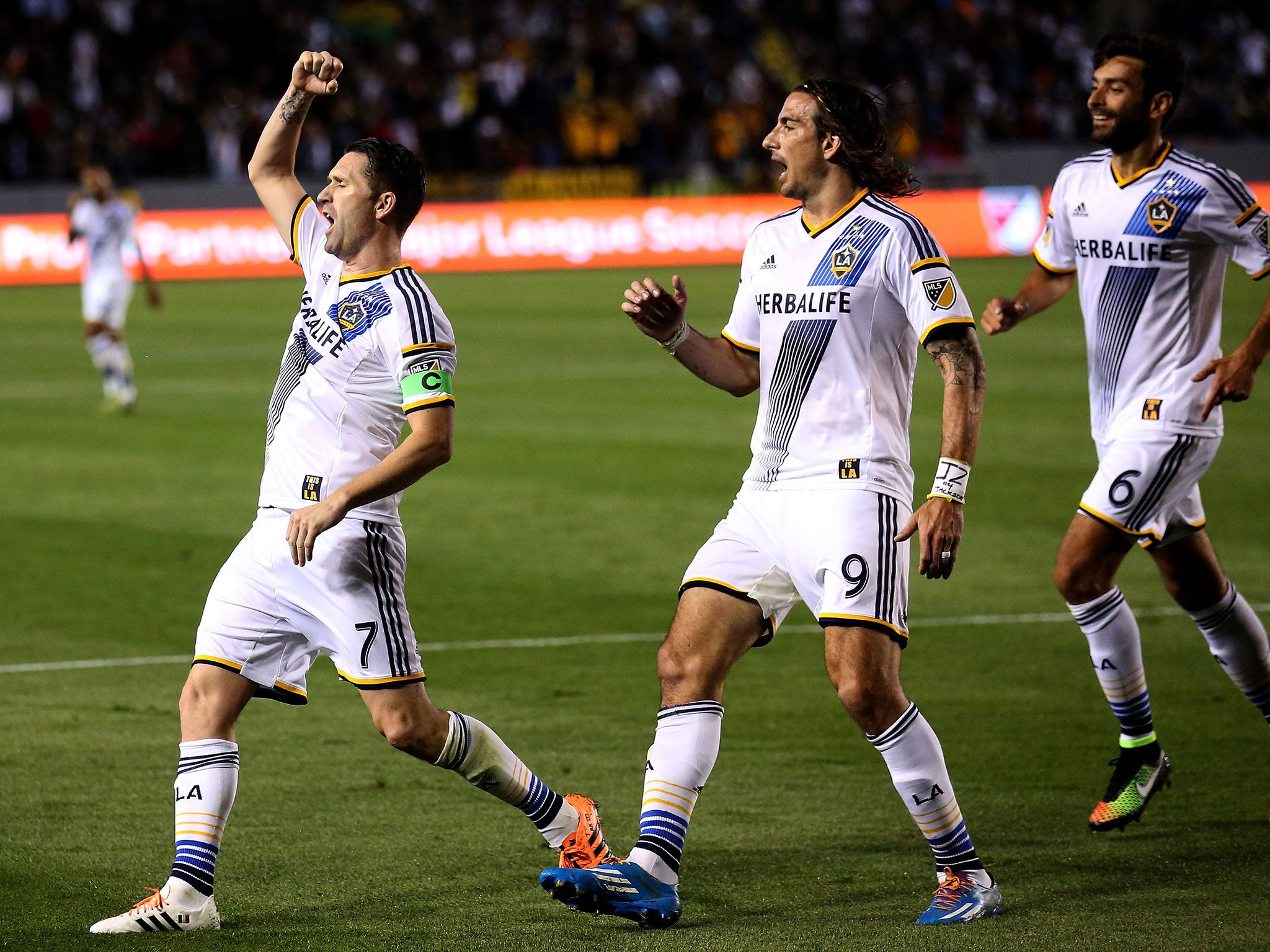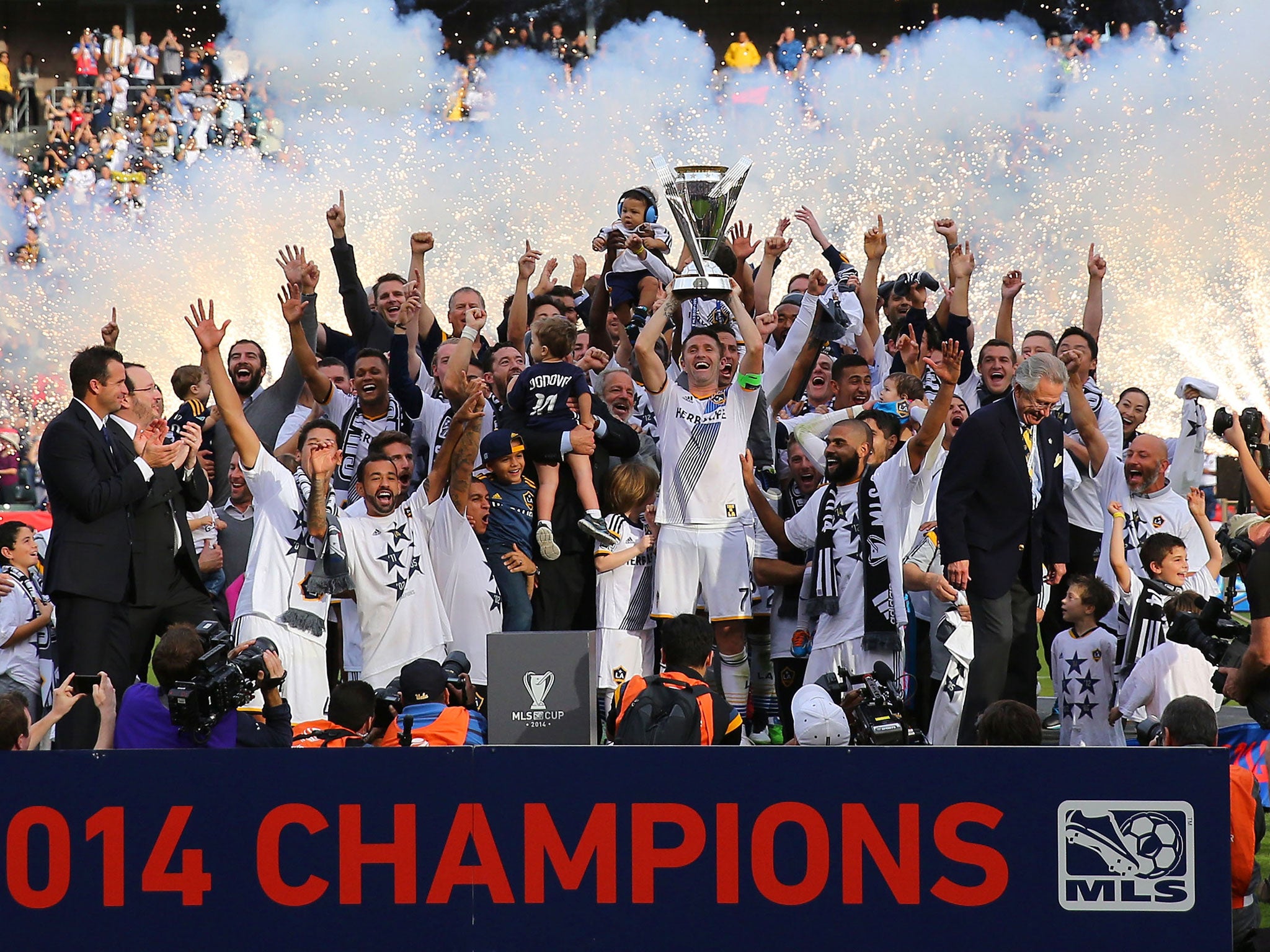MLS infant is now an adult – but still suffers from growing pains
US soccer league at 20: healthy but not wealthy enough

How time flies. The infant born of a promise that helped the US secure the 1994 World Cup, is now entering adulthood, as Major League Soccer this weekend kicks off its 20th season. But the eternal conundrum remains: will the world’s most popular sport ever truly win the heart of the world’s richest and most powerful country?
Progress is there for all to see. A league that started with just 10 teams and flirted with collapse, now boasts 20. No longer are they waifs and strays, forced to play in American Football and baseball stadia. These days, a majority have purpose-built soccer-only grounds, while the best supported of them, the Seattle Sounders, are watched by an average 44,000 fans.
Yet the world’s game operates here within a strictly American structure. Promotion and relegation do not exist. As in baseball, American Football and basketball, the regular season is not an end in itself: merely a prelude to play-offs which decide that season’s champion.
Players are contracted not to their clubs, but to MLS itself – a uniquely paternalistic structure even by the standards of US sport, designed to prevent bidding wars for the best players that the richest franchises would inevitably win. Reinforcing the principle of competitiveness are salary caps, equal for all. And, if competitiveness is what you’re after, the system works. Early on, DC United were the team to beat – now the pendulum has swung west to the LA Galaxy. But over 19 years, nine different teams have been champions, and this year’s champions are anyone’s guess.
But let us not get carried away. Standards are low – as is evident to any fan here who watches the increasingly popular live Premier League broadcasts, many of whom must get up at the ungodly hour of 4.45 am on the West Coast to catch the Saturday early game.

Remember, too, that this is where the return of Jose Altidore (he of one goal in 42 games for Sunderland) to FC Toronto is regarded as something akin to the second coming. MLS commissioner Don Garber aims to have his league counted among the world’s best by 2022. The fact is that, to Garber’s great annoyance, US national team coach Jürgen Klinsmann publicly tells his best prospects that if they want to challenge the world, they should play in the European leagues, not in the backwaters of North America.
And despite the inconvenient hours, the Premier League boasts viewership double that of MLS. Sure, you can watch the glamorous foreigners in the twilight of their careers crossing the Atlantic for a low-stress final payday.
Thierry Henry has retired, but Steven Gerrard, Kaka, Frank Lampard and David Villa are among those arriving – the two last-named at New York City, the Manchester City affiliate which hasn’t yet played a game that counts but has won every prize for pre-season boosterism. A 60,000 sell-out crowd is expected for NYC’s opener today in Florida, against Kaka’s Orlando City.
But the week-to-week reality is far more mundane. Villa, Gerrard and the other big names imported to boost the league’s profile can earn $5m (£3.3m) or more annually as “designated players”, outside the basic salary cap imposed by MLS on every club, to create a level playing field in a league whose membership never changes.
For the rest, however, no such riches await. Forget comparisons with the Premier League: average MLS pay is just two-thirds that of the Championship. Of the 572 registered players, only 15 made $1m (£665,500) or more. Last season one in five was on the league’s minimum wage, a mere $36,000 (barely £24,000) per year and less than the national median income of $50,000. For the journeymen of US soccer, a two-earner household is essential.
True, the new labour contract, thrashed out last week under threat of a players’ strike, is marginally more generous. The minimum wage goes up to $60,000, and the team salary cap to $3.5m. Players will henceforth be eligible for free agency, in other words may seek a transfer, when they are 28 and have eight years service. That, too, will boost salaries. Even so, as measured by money, the yardstick that matters most in American pro sport, soccer remains a minnow.
MLS administrators point out that average attendances in their league now tops the NBA and the National Hockey League. But its annual income from TV is less than $100m (a figure, incidentally, about the same as the current combined annual loss of the 20 franchises). Compare that with the $2.7bn raked in yearly by the NBA, not to mention the NFL’s annual $7bn income from TV rights alone.
Money, ultimately, will determine the future of the MLS as it approaches its 20th birthday. At a grassroots level, the game is stronger than ever. By 2013, a survey found, MLS had become as popular as Major League Baseball among 12 to 17-year-olds. As worries grow about the health risks posed by American Football at high-school level, soccer is the clear beneficiary.
Yet the conundrum remains. A real breakthough never seems to come – and the explanation is, as always, money. When the time comes to choose, the best teenage and college athletes go for the NFL, the NBA or Major League Baseball, and their multi-million dollar contracts. Until soccer can offer the same, MLS will plod on. But who knows? One day patience may be rewarded.
Join our commenting forum
Join thought-provoking conversations, follow other Independent readers and see their replies
Comments